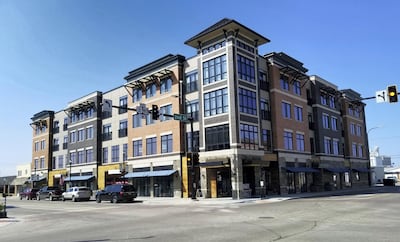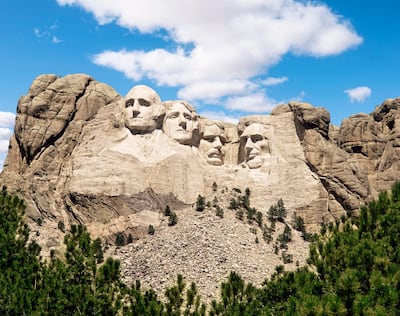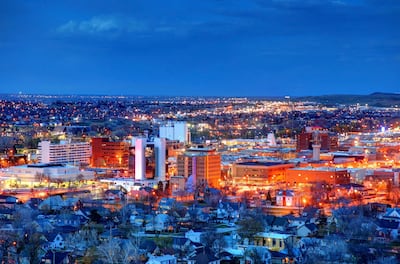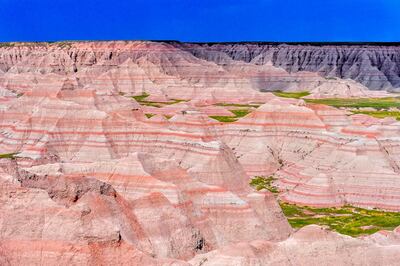South Dakota’s Rapid City has a population of 75,000 and is one of the most isolated towns in America. Native American reservations and expansive national parks surround it, while the nearest major city, Denver, is more than 620 kilometres away. For these reasons, the gateway town to Mount Rushmore is an unlikely place to find a small, if successful, Middle Eastern community.
Today, between 30 to 40 Arab families call Rapid City, and the region surrounding this placid place, home. Some work as medical professionals, others in local education and engineering institutions, or in the food and hospitality fields. A small number of students, the majority from Saudi Arabia, come to learn engineering at the South Dakota School of Mines and Technology, where one lecturer hails from Turkey and where Palestinian engineer Hani Shafai first came to study back in the 1980s.
Home on the Plains
When Shafai left the Gaza Strip as a teenager, little did he know that he'd become one of the biggest property developers in South Dakota today. "It was August 28, 1981," he tells The National. "I was just about to turn 20. It was a culture shock. In the Gaza Strip the borders are very closely monitored, and it's very densely populated. When you come here, you see the vast ground that's empty." Back then, Rapid City, located in the Great Plains, was home to only 40,000 people. The Gaza Strip, on the other hand, was – and remains – one of the most densely populated territories in the world.
Shafai hails from Beit Lahia, a town close to the Israeli border, and its residents have been subjected to shelling and air strikes over the years. He ended up in Rapid City after encountering a teacher from South Dakota who took a shine to him while he studied engineering at Birzeit University in Ramallah. He then went to study at the South Dakota School of Mines and Technology, but the move wasn’t easy at first, and he had mixed emotions about staying in Rapid City. “I actually wanted to go back home after graduating,” he admits. “But it was difficult because of the political situation. All of my family are still in Gaza.”
Yet, within a decade of gaining his degree, Shafai, having worked for a time in Chicago and Los Angeles, found himself back in Rapid City, consulting and teaching at a university, before being hired as a city engineer. In 1998, he branched out on his own, starting a business called Dream Design International. Fast forward to today, and under Shafai, who was once referred to as the "Elon Musk of South Dakota", the company has almost single-handedly transformed Rapid City's infrastructure, helping to turn the once moribund town into a thriving outdoor recreation destination. The company has gone on to build 6,000 housing units, and develop nearly 300,000 square metres of commercial property.
"We probably do about 60 per cent of the land development in the area today," Shafai explains. "We saw a need. One of our first projects was an apartment complex. Back then, there were no apartments being built. The rents were really high, so we built 152 units." In the years since, Rapid City has transformed from a tourist-based regional town, dependent on people visiting Mount Rushmore and nearby parks, into a diversified local economy.
A history of Arabs in the Wild West
It may surprise many, but the early history of Arab immigration to America has its root not in east coast cities, such as New York or Boston, but out here in the "Wild West". The country's first mosque was built in Ross, North Dakota, in 1929, and the first Syrian Orthodox church, west of the Mississippi river, was established in Kearney, Nebraska, in 1903.
Signed into law by former president Abraham Lincoln, the Homestead Act of 1862 gave 160 acres of free land (formerly Native American territory) to anyone who had lived in the Dakota Territory for five years and cultivated the land. With that, about 100,000 immigrants moved to the vast Great Plains. By the early 1900s, the region was home to not one, but two Arab banks, which were built to meet the needs of Middle Easterners who had come out west in search of land, a new beginning and perhaps some gold to boot. At that time, some of the most successful families were from Syria, and they contributed hugely to life and the development of towns and other settlements on the Great Plains.

These hopeful settlers from the eastern US first found work as peddlers on the railroads, selling goods and equipment to the poor. Soon, the Arab settlers opened stores and cafes, bought land and became homesteaders. By 1908, the local Arab community in western North Dakota had published the Syrian Business Directory, to keep track of the flourish of new Middle Eastern-owned enterprises.
Modern day-to-day challenges
Today, as calming as life on the Plains may be, for Arab settlers there are some drawbacks to living in a place as out-of-the-way and bucolic as South Dakota. While these families are thriving professionally and personally, religiously speaking it can be difficult. The nearest mosque or Islamic centre is a five-hour drive east of Rapid City in Sioux Falls. "We thought about building a mosque and started gathering donations, but we found the community isn't big enough to maintain and manage one," says Shafai, who is also a father of two adult children currently in college.
Instead, during Ramadan, the local Muslim community normally gathers once a week at the Shafai residence for iftar. They also reserve a room at the local university’s student centre for Friday prayers, to help accommodate the students. “They [South Dakota School of Mines and Technology] do awesome work for us,” Shafai says gratefully.
Meanwhile, Middle Eastern restaurants are scant on the ground. A century ago, when the first wave of immigrants came out west, there were supermarkets and cafes aplenty, but today it can be tough for people like Shafai to find a taste of home. The Gyro Hub, west of downtown Rapid City, however, is a popular dining spot. Run by two sisters from Turkey, the restaurant serves traditional Turkish food, such as borek and baklava, as well as Levantine dishes, including hummus and falafel.
The community is slowly declining, too. For instance, the number of Gulf students coming to the city has fallen, as more choose to study at universities back home.
'I love it here'
Despite these drawbacks, Iraqi teacher Hussein Sanooh says he has no plans to leave. For him and his young family, life today sees them surrounded by herds of white-tailed deer strolling calmly through their leafy Rapid City neighbourhood, while a decade ago they faced threats in their home city in southern Iraq."I worked as a translator for the US army," he says. "I kept in touch with a general whose command I worked under, and who was from Rapid City.
"When I received a threat [to my safety] in 2004, and another in 2008, that triggered that I could not stay there." So Sanooh and his family moved to the US in 2010, and, while he studied English, the contacts he'd made in Iraq helped him find a job at the local school district in Rapid City.
Now, he works as an art teacher and he's happy. "I love it," he says, although he admits having to do the six-hour trip to Denver for Middle Eastern foodstuffs can be tough. "My wife is a pre-school teacher. That's the beauty of here – there are opportunities that you can take advantage of."
However, the city is not immune to the growing preponderance of right-wing elements that have emerged across the country in recent years. In May 2017, the anti-Muslim, pro-Trump ACT for America group met here, and gave a blasphemous depiction of the history of Islam. About 250 people reportedly attended.
But Shafai says he rarely comes across any outright forms of prejudice in his day-to-day life. “You see it, once in a while, and it’s not really from within the community,” he explains. “But the good thing is that the majority of the community speaks loudly against those types of things.”
Sanooh's wife, Haus, agrees. While locals are often curious about why she wears a hijab, she sees this simply as an opportunity to interact with them and tell them about her religion and culture. "We came here with [university] degrees, we grew up in open-minded families," she says. "When we came here, we knew what to expect."




